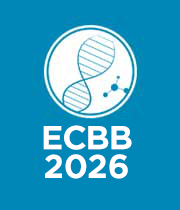Title: Carboxylesterase modification (With lithium) As therapeutic enzyme for human Brain diseases.
Abstract:
Carboxylesterases (CEs) are hydrolytic enzymes involved in anticancer drug metabolism. Human WHO grades all meningiomas and gliomas exhibited lower CE-specific activity which proves one of the main reasons for the failure of chemotherapy. The similar CE-specific activity between the meningiomas 20.96±5.071 (n=50) and gliomas 20.77±4.4644 nmol/min/mg (n=61) respectively, exhibited significantly lower CE activity as compared to normal Brain (n=106) 52.355 ± 11.15 nmol/min/mg of protein and p-value was less than 0.0001 extremely statistically significant. So it is necessary to enhance the CE activity in Brain tumors. The two glioblastoma cell lines LN229 and U251 were considered to enhance CE levels and total protein. The LN229 with high concentration of lithium treated (0.5µM) cells showed lower protein content (373.33mg) compared to control (640mg) and the low concentration of lithium with (0.1µM) treated cells showed comparatively higher protein content (426.66mg) content to control. While U251, high concentration of lithium treated cells showed lower protein content (720 mg), compared to control (880 mg) and also the lower concentration of lithium treated cell showed higher protein content (1520 mg), compared to high concentration of lithium treated cells and control. These results suggest that low concentration 0.1µM lithium chloride showed higher protein content while higher 0.5µM LiCL2 treated cells lower protein related to anti cancerous activity in LN 229 and U251 cell lines.
The LN 229 showed lower carboxyl esterase, may be one of the reasons for the failure for the chemotherapy. Whereas the higher CES-specific activities in lithium-treated Brain tumor cell lines LN 229 and U251 can be designed for the anticancer drug conjugate.The chance of solving the drug metabolism from lithium for efficient metabolism by CE-specific activity and designed for better anticancer drug therapeutics in the future.In other cases Carboxyl Esterase (CE) was assayed for four different groups of young and old aged male Albino Sprague dawley rats (2-4 and 16-18 months) in brain and liver. Among them both aged rats were treated with 37 mg of lithium chloride (LiCl2) per kilogram of body weight orally for 10 days. LiCl2 showed completely positive effect on releasing carboxyl esterase in both young and old groups of brain (36.1 and 89.3 nmoles/min/mg of protein) and liver (114.93 and 91.73 nmoles/min/mg of protein) respectively than control. The young and old rat brain samples treated with LiCl2 showed intense band for CE in Native PAGE gel than untreated groups.Old rat brains LiCl2 treated showed significant increased CE specific activity of 0.076 IU/mg protein in crude, 0.1445 IU/mg protein in Ammonium sulphate precipitated and 0.5827 IU/mg protein in ion exchange fraction than their control. So the highly purified samples of carboxyl esterase obtained with LiCl2 treated brain. Enzyme kinetics of substrate concentration showed KM of 0.2 mM and Vmax of 52.631, indicating higher CE activity at pH-6 and at 60oC temperature in crude extracts of control old rats.
Thus LiCl2 is involved in activation of CE function and potential to be integrated into drug-development programs as neuroprotective factor to facilitate the neuronal/brain function.
Audience Take Away Notes :
- They will come to know the importance of Hydrolytic enzymes as anticancer drug metabolizing enzyme in brain tumors
- People can also start working on proteins and enzymes for molecular diagnosis and as therapeutic enzymes they can utilize but in differen tumors and diseases since I am working on Brain cells
- It will improve if we design with Advance Techniques analysis and proper standardization
- It helps for complimentary diagnosis
- It can also be design for surrogate biomarkers
- The detection of the patient’s condition for drug metabolism
- It can improve the chemotherapy
- To understand the molecular mechanism of the brain diseases



